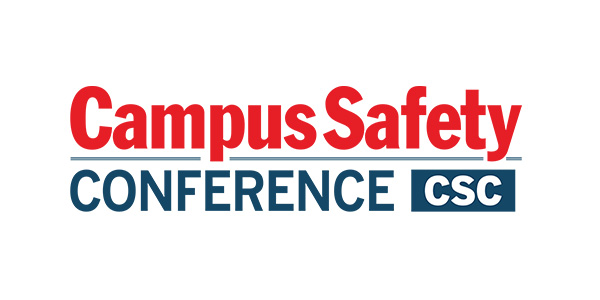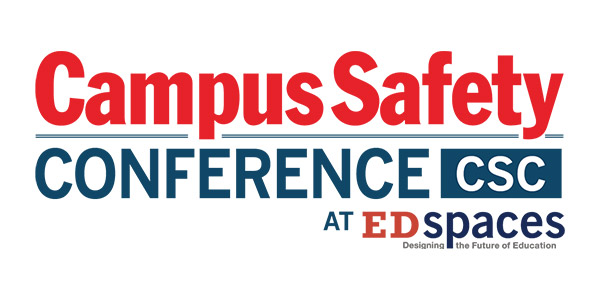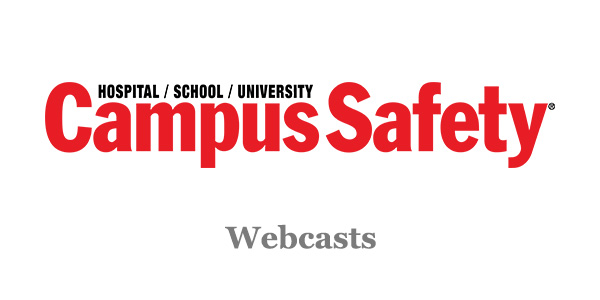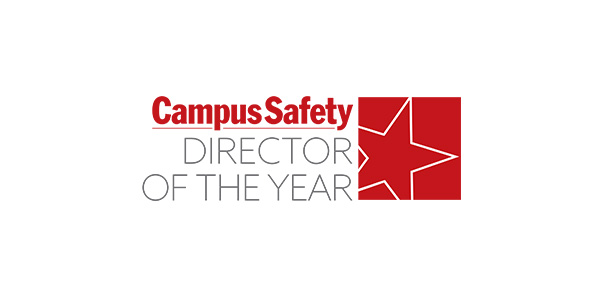In today’s rapidly evolving security landscape, campus administrators face mounting pressure to enhance safety while managing limited resources. Whether it’s a school district protecting students or a hospital safeguarding patients and staff, the challenge remains consistent: how to implement robust security solutions that adapt to changing needs without breaking the budget.
Having worked with numerous campus environments on their security infrastructure, I’ve seen how the emergence of cloud technology is transforming this equation. The message is clear: options and flexibility are paramount. The ability to select the right solution at the right time and to adjust as circumstances change has become essential for creating safer, more efficient campus environments.
Campus Security Needs Have Evolved
Campus security requirements have grown increasingly complex over recent years. Schools need systems that can respond to safety threats while hospitals require solutions that enhance patient monitoring and prevent drug diversion. Both environments demand technology that supports day-to-day operations while preparing for emergencies that everyone hopes will never occur.
The stakes couldn’t be higher, particularly in educational settings. The heartbreaking reality of school shootings has created an urgent need for more effective security measures. Technology solutions that can help identify threats early, coordinate responses, and provide critical information to first responders aren’t luxury items today — they’re necessities.
Similarly, hospitals with static systems struggle to incorporate innovations like patient monitoring analytics or emergency response features. Healthcare facilities need solutions that can adapt to changing requirements — from monitoring patient rooms for falls to securing medication storage areas against drug diversion, and from tracking equipment to ensuring parking areas remain safe for staff, patients, and visitors.
The traditional approach of installing video security systems with limited expansion capabilities no longer addresses these evolving challenges. When an organization installs cameras locked into proprietary systems, they significantly limit their ability to adopt new technologies or respond to changing security priorities. An open platform VMS provides the foundation for future adaptability, allowing campuses to integrate best-of-breed technologies as they emerge rather than being constrained by the limitations of a single manufacturer’s ecosystem.
Related Article: Your Guide to Selecting the Right Cloud Security System for Your School
Campuses can choose from different cloud models based on their needs, ranging from fully managed services in the cloud to hybrid solutions that integrate with existing infrastructure. These options include:
- Video Security as a Service (VSaaS) options provide turnkey solutions ideal for smaller campuses with limited IT resources. These platforms offer comprehensive security tools without requiring extensive technical expertise to implement or maintain.
- Hybrid deployments balance on-premises hardware with cloud capabilities, preserving existing investments. This approach allows campuses to maintain critical local systems while leveraging cloud resources for storage, analytics, and remote access.
- Full cloud implementations deliver maximum scalability for larger, enterprise-level requirements. These solutions enable rapid deployment across multiple locations while providing access to advanced analytics and integration functions.
Cloud Solutions Go Beyond Hardware and Transform Campus Operations
The shift to cloud-integrated video security represents more than a change in where data is stored. It fundamentally transforms how campuses operate. This transformation touches every aspect of campus management, from IT operations to emergency response.
For campus IT departments already stretched thin, cloud solutions reduce the burden of managing extensive server infrastructure. Rather than dedicating resources to routine maintenance tasks, IT staff can redirect their attention to more strategic initiatives. This transition removes the need for extensive server rooms and complex maintenance schedules, resulting in a leaner, more efficient operation.
With cloud integration, the financial structure also changes dramatically. Instead of large capital investments followed by periodic hardware refresh cycles, campuses can transition to predictable operational costs through subscription-based services. This shift from capital expenditure (CapEx) to operational expenditure (OpEx) provides more stable budgeting for administrators while ensuring automatic updates and ongoing support.
Remote accessibility represents another significant advantage. Security staff can monitor systems, adjust settings, and respond to alerts from anywhere, dramatically reducing response times during emergencies. During critical incidents, authorized personnel can access video data and receive alerts on their devices regardless of their physical location, enabling faster decision-making when seconds matter most.
Enhance Security Through Integration and Analytics
The cloud’s transformative impact extends beyond operational efficiency to security effectiveness. By serving as a central hub for diverse data sources, cloud platforms enable comprehensive security approaches that weren’t previously possible.
In educational and healthcare settings, this means the ability to integrate various systems — from video monitoring to access control to emergency notification — into a cohesive security ecosystem. An open platform video management system (VMS) serves as the command center, ingesting, processing, and analyzing data from multiple sources while presenting actionable information through a unified interface. When an incident occurs, staff can access critical information and coordinate responses regardless of their physical location.
This integration plays a crucial role during emergencies. Instead of piecing together information from disparate systems, security personnel have immediate access to comprehensive data that provides context and enables informed decision-making. The system serves as a force multiplier for existing security personnel, helping them make more effective decisions while maintaining focus on their primary responsibilities — ultimately creating safer environments with existing staffing levels.
Related Article: 2025 Access Control Predictions: AI, the Cloud and Mobile Credential Applications to Expand
Healthcare campuses leverage these same capabilities to address their unique challenges. Hospitals can incorporate patient monitoring systems that detect falls or medical emergencies, integrate real-time location systems for staff safety, and implement analytics that identify unusual behavior patterns or potential drug diversion activities. Patient-centric technologies like in-room cameras and sensors provide continuous monitoring that enhances safety through early detection of medical complications, identifying unusual sounds or incidents, and enabling prompt medical interventions when needed.
The fusion of video and data applications with emergency response systems is revolutionizing communication among hospital staff. When seconds matter during a medical emergency, these integrated systems ensure that the right information reaches the right personnel immediately — improving response times and potentially saving lives. These tools create a security environment that enhances patient care while protecting valuable resources.
The integration of advanced analytics represents perhaps the most significant advantage. Cloud platforms enable access to sophisticated tools without requiring substantial on-site computing resources. The AWS Marketplace, for example, offers a rich array of video analytic tools that can be deployed instantly and scaled as needed, allowing organizations to access leading technologies without long-term commitments. These capabilities help identify potential security issues before they escalate, allowing for proactive rather than reactive approaches to campus safety.
For instance, video analytics can monitor parking areas to protect vehicles from theft, ensure emergency access lanes remain clear, and even distinguish between authorized and unauthorized vehicles. In healthcare settings where doctors often drive premium vehicles, targeted theft prevention systems can monitor parking facilities and alert security personnel to suspicious activities.
In school settings, similar tools can help identify unusual crowd gatherings or unauthorized access attempts — serving as an early warning system for potential security concerns.
6 Principles to Navigating the Path Forward and Finding Your Cloud Strategy
With the range of options available, developing an effective cloud strategy requires careful consideration of your specific campus environment, current infrastructure, and long-term goals. Several key principles can guide this process:
- Start with your needs, not technology. Before evaluating platforms, clearly define what you’re trying to accomplish. Are you primarily concerned with enhancing emergency response? Improving day-to-day operations? Reducing management overhead? Your answers will shape which cloud approach makes the most sense for your environment.
- Consider your existing investments. A hybrid approach allows you to preserve current hardware while gradually incorporating cloud tools. For campuses with significant investments in on-premises equipment, this often represents the most practical path forward. Educational institutions with recently upgraded cameras, for instance, might maintain those devices while transitioning recording and management functions to cloud platforms.
- Evaluate your IT resources. Campus environments with limited technical expertise may benefit most from Software as a Service (SaaS) solutions that minimize management requirements. Those with more robust IT departments might prefer hybrid approaches that provide greater control over their security infrastructure. The key is aligning your cloud strategy with your available resources.
- Plan for integration. The most effective campus security solutions incorporate various systems into a cohesive whole. Ensure your cloud platform supports integration with access control, emergency notification systems, and other security technologies. Open platforms that accommodate multiple manufacturers and technologies offer the greatest flexibility for current and future needs.
- Prioritize scalability. Campus security needs rarely remain static. Select cloud solutions that can expand as your requirements grow—whether that means adding cameras, incorporating new technologies, or extending coverage to additional locations. The ability to scale without significant infrastructure changes represents one of cloud computing’s most valuable benefits.
- Consider deployment speed. One of the cloud’s most compelling advantages is rapid implementation. When security needs change quickly, cloud solutions allow you to spin up servers and bring new locations online in minutes rather than months. This agility provides a significant advantage over traditional systems that require extensive planning and hardware procurement.
Don’t Rush Your Transition to the Cloud
The transition to cloud-based video security doesn’t have to happen overnight. Many campuses find success with incremental approaches that address specific needs first, then expand as comfort and confidence with cloud solutions grow. Whether that means beginning with a single building or starting with a hybrid system with limited cloud functionality, the key is maintaining flexibility throughout the process.
The future of campus security isn’t about choosing a single approach, it’s about having options that allow you to select the right solution at the right time for your specific environment. As bandwidth limitations diminish and connectivity expands through technologies like 5G networks and innovative satellite systems, even the most remote locations can now leverage advanced security capabilities, offering new opportunities to enhance safety across campus environments of all types.
The most important question isn’t “Should we move to the cloud?” but rather “Which cloud approach best addresses our specific needs today while positioning us for success tomorrow?”
By focusing on flexibility and maintaining access to a range of options, campuses can implement security solutions that truly serve their unique requirements rather than forcing their requirements to fit predetermined solutions. In an environment where safety challenges continue to evolve, this adaptability may be the most valuable security asset of all.
Matt Fishback is Milestone Systems’ Global Technology Partner Manager & Americas Team Lead.
NOTE: The views expressed by guest bloggers and contributors are those of the authors and do not necessarily represent the views of, and should not be attributed to, Campus Safety.







